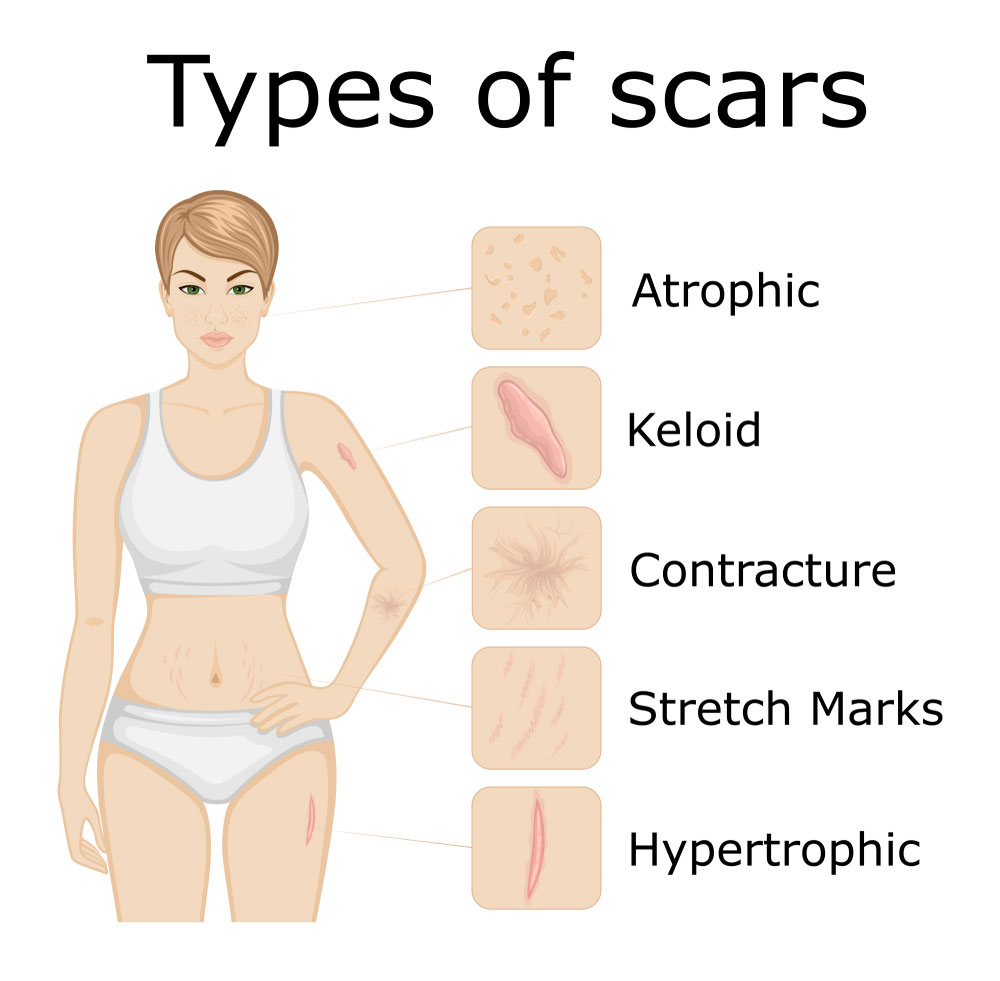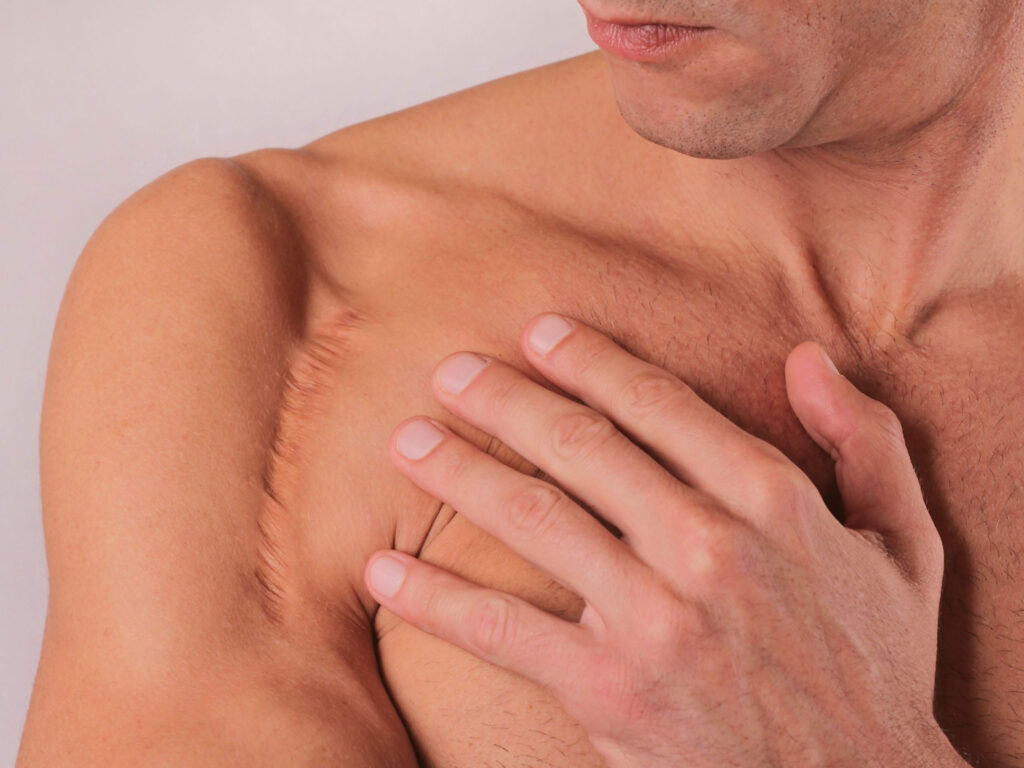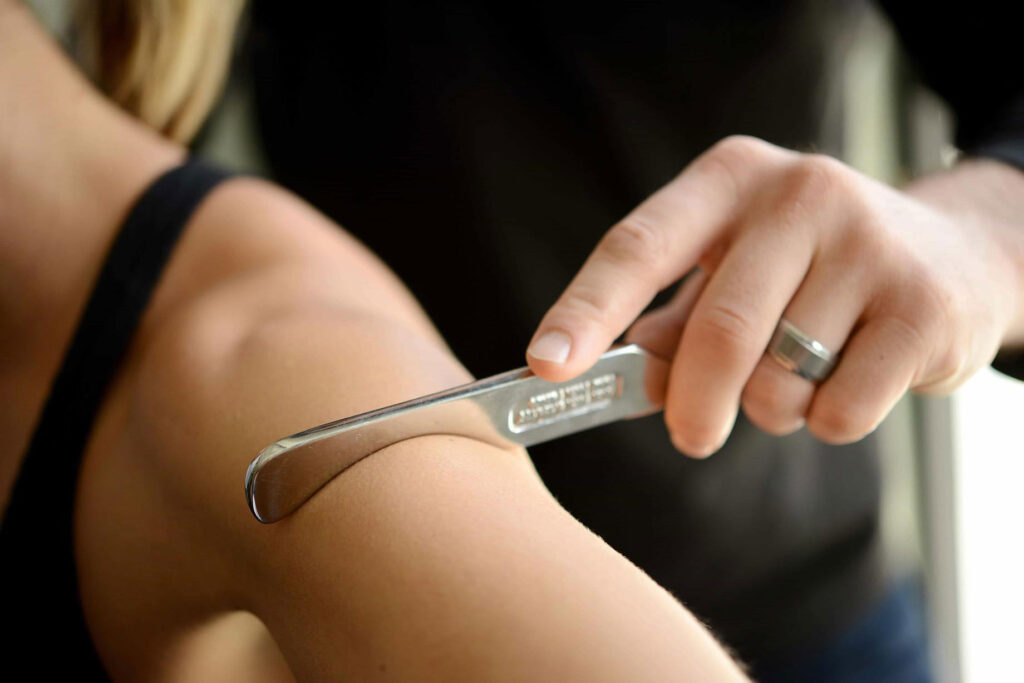UNDERSTANDING SCAR TISSUE
Our body responds to an injury by repairing the damaged tissue. This repair leads to the creation of scar tissue. The scar tissue is different from skin tissue, as it is less elastic leading to tightness, limited movement, and pain for some people.
Scar tissue develops as a part of the body’s natural response to damage. The scar tissue might develop as the body might heal a wound, such as a:
- Burn
- Cut
- Sore
- Surgical incision
The external scar tissue has a different structure in comparison to the skin. In the case of scar tissue, the collagen proteins grow in a single direction instead of the multidirectional pattern, as in the case of healthy skin. Due to this unidirectional growth, the scar tissue becomes less elastic, which may cause it to feel tight or restrict the range of movement.
Sometimes, scar tissue may also develop inside the body. You may develop scar tissue internally after undergoing surgery.

SCAR TISSUE AND PAIN
You may feel pain due to scar tissue in several ways. Sometimes, the pain is due to skin tightness, which may make it more difficult to move freely.
The scar tissue pain occurs due to nerve damage caused by the original injury. You might have long-term symptoms if the wound was deep and affected nerves or tendons, such as pain or numbness, in the affected area.
You may experience scar tissue pain due to fibrosis that occurs when the body grows an excessive amount of scar tissue. You may have ongoing pain, inflammation, and loss of function of the tissue or joint due to fibrosis adhesion.
Fibroblasts cells are formed during scar tissue growth and are responsible for fibrosis. You may have prolonged if the fibroblasts do not clear over time. Other symptoms such as itching, swelling, and tenderness or sensitivity may be associated with scar tissue.
SIGNS OF SCAR
The initial sign is when a scar develops on lighter skin that is usually pink or red. The pinkish color fades over time, and the scar becomes slightly darker or lighter than the color of the skin. But, the scar may appear as dark spots for people with dark skin. The scars may itch, and be painful or tender.
The appearance of a scar would depend on several factors, such as:
- Injury or event causing the scar-like surgery, a burn, or severe acne.
- Size, severity, and location of the wound.
- Treatment of the wound, such as stitches or bandages.
- Your age, genes, ethnicity, and overall health.

CAUSE OF SCAR
Scars develop as a part of the healing process. Our skin is the barrier to protect us from germs and other harmful substances in process of our immune responses. In case of skin injury, the body creates new tissue made of collagen to help reseal itself.
Collagen helps in plumping up your skin as well as helping your cartilage protect your joints. The collagen fibers repair damaged skin and close any open areas in case of scars. The new tissue developed as the wound heals protects you from further infection.
The scar tissue may be present in a variety of ways, such as:
- Keloid: This is a raised, red-skin colored plaque of scar tissue. These can form on tissues after an injury. They usually appear on the upper chest, shoulders, and upper back.
- Hypertrophic scar: It is a more common form of scar tissue that may fade over time.
- Contracture scars: These usually occur in tissues after the burn injury that can impair the movement of the affected area.

TREATMENT OF SCAR
The scars cannot be removed completely but, their appearance can be improved to some extent. Some of the methods for improving the appearance of scars include:
- Topical treatments: The over-the-counter options such as vitamin E, cocoa buttercream, silicone gel, onion extract products, and several commercial skincare products such as Vaseline and Aquaphor are effective in helping to heal scars.
- Surgery: The surgery may not remove a scar, but can be used to alter its shape or make it less noticeable. It is not recommended for hypertrophic or keloid or raised scarring as there is a risk of the scars reoccurring and becoming more severe from the treatment.
- Steroid injections: The steroid injections into a scar help flatten and soften the appearance of keloid or hypertrophic scars. The steroid injected into scars reduces the size of the scar and eases itchiness and pain.
- Radiotherapy: Providing low-dose, superficial radiotherapy prevents recurrence of severe keloid and hypertrophic scarring. This treatment is beneficial only in extreme cases because of possible long-term side effects.

- Dermabrasion: This procedure involves the removal of the surface of the skin with specialized equipment. The process helps to blend the irregularities of a scar whether it is raised or depressed. You may see new tissue growth around 5–8 days after the procedure. Microdermabrasion is a less invasive form of dermabrasion, which is minimally useful for very superficial scars.
- Laser resurfacing: This procedure involves the removal of the surface layers of the skin with the help of different types of lasers. Advanced lasers help achieve more subtle results by working on the collagen in the dermis without removing the upper layers of skin.
- Filler injections: The injections can be used to raise sunken scars to the level of surrounding skin. There might be side-effects that are only temporary, but, the procedures might regularly be repeated.
- Microneedling: Small puncture holes are made into the superficial skin that help stimulate collagen production. The process even involves introduction of collagen stimulators or other products that reduces the appearance of scars.
- Cryosurgery: This would freeze the scar to reduce its size, reduce pain, itchiness, hardness and discoloration.
Home remedies can help you manage or reduce scar tissue pain, ease swelling, and speed scar healing. These may include message, exercise, moisturizer, taping and application of silicone gel.
OUTLOOK
Scar tissue develop after an injury that develop on the skin’s surface or even inside the body. Sometimes, scar tissue may cause pain, tightness, itching, or difficulty moving, that may occur years after an injury. You can try using massage, moisturizers, and silicone gel, among other at-home treatments. The doctor may recommend additional treatment in case the pain persists, such as fat grafting or scar revision surgery.
People Also Read :
- What is CBD Cream?
If you or anyone you know is suffering scar tissue pain, our expert providers at Specialty Care Clinics will take care of your health and help you recover.
